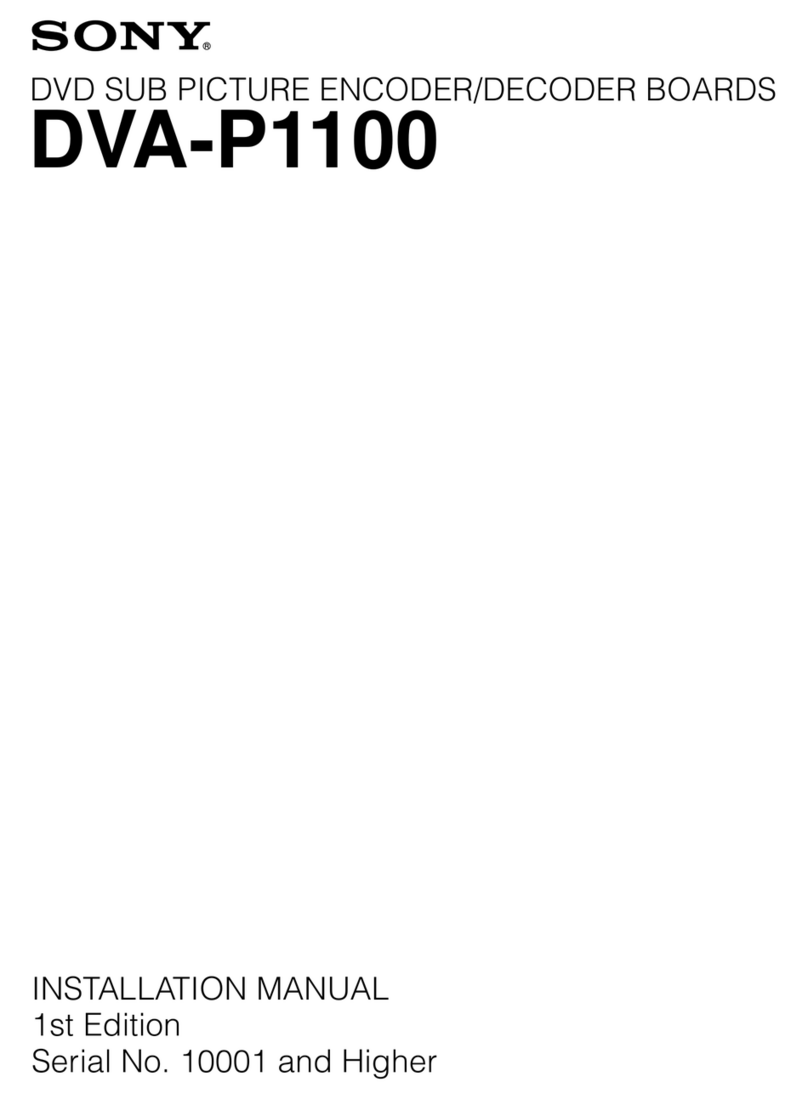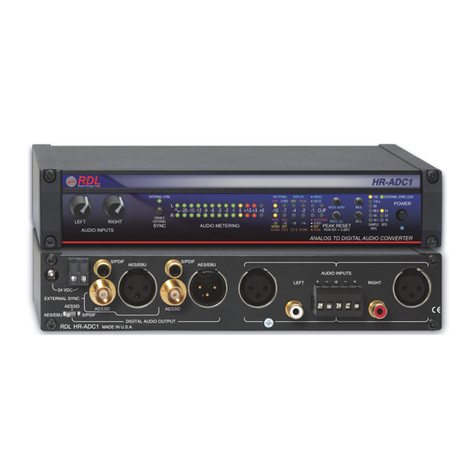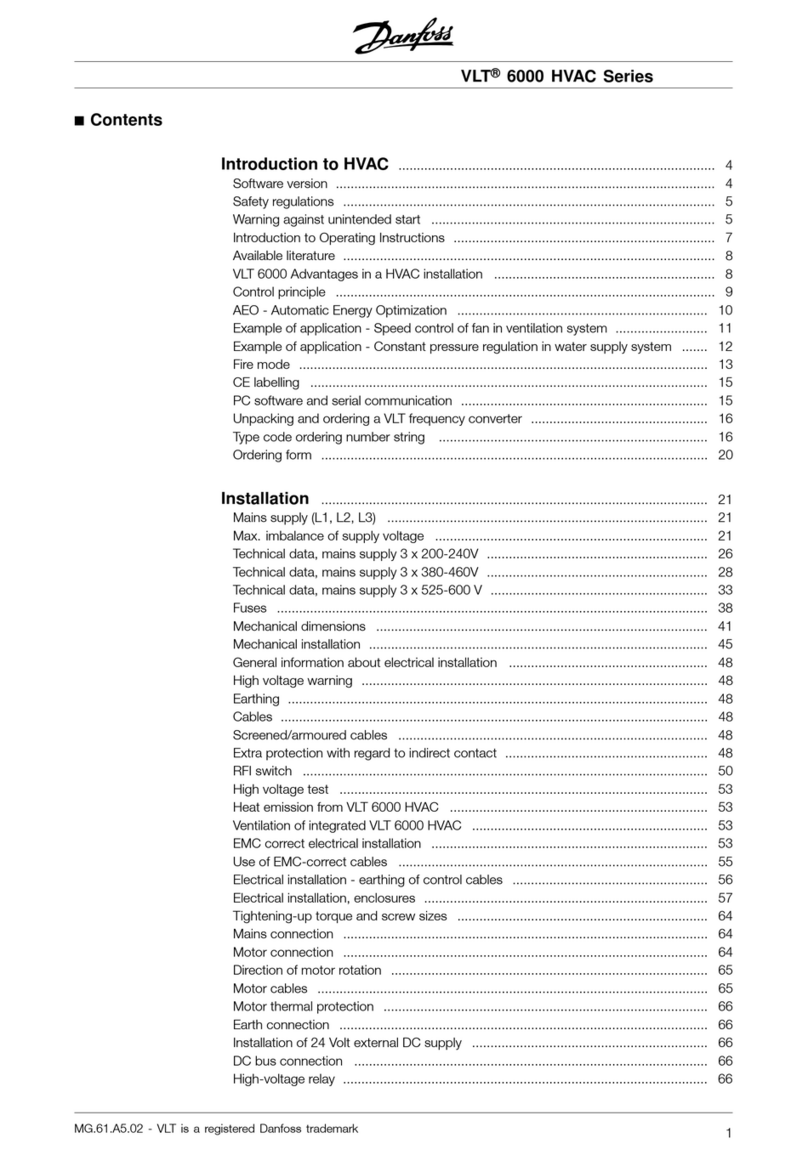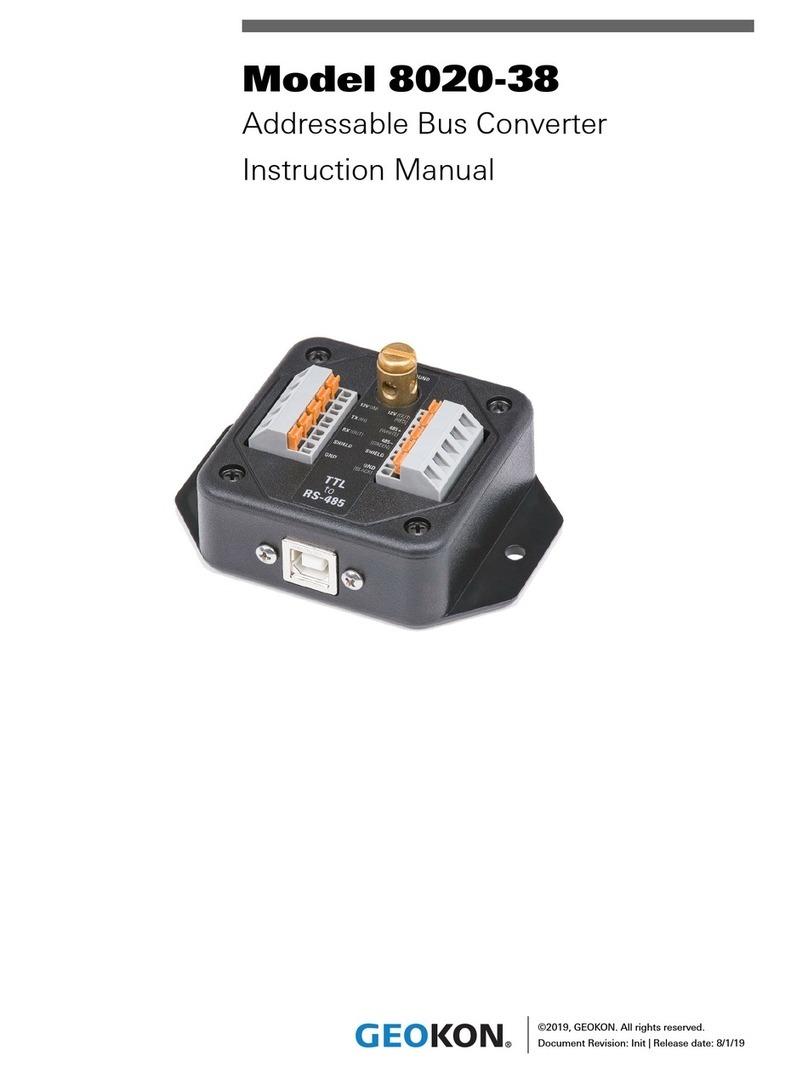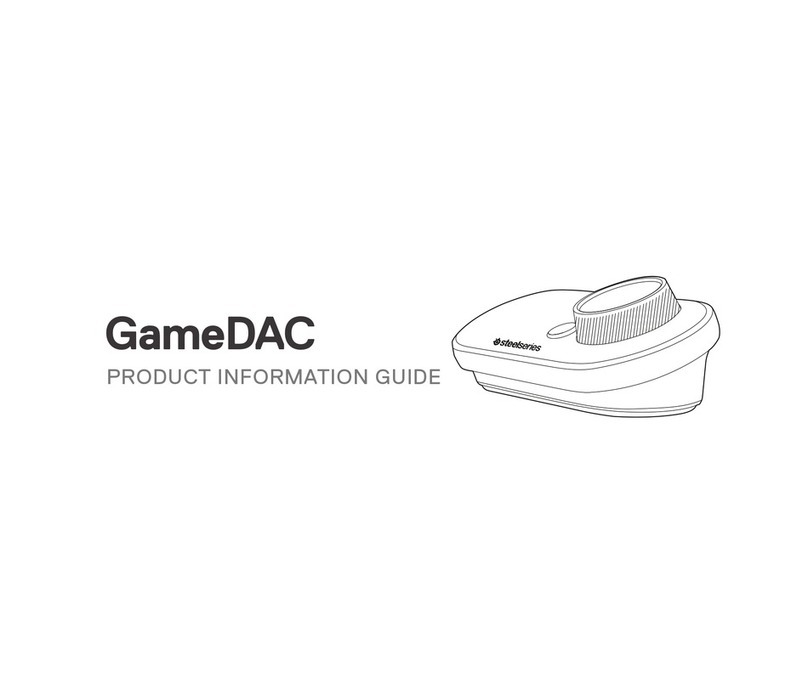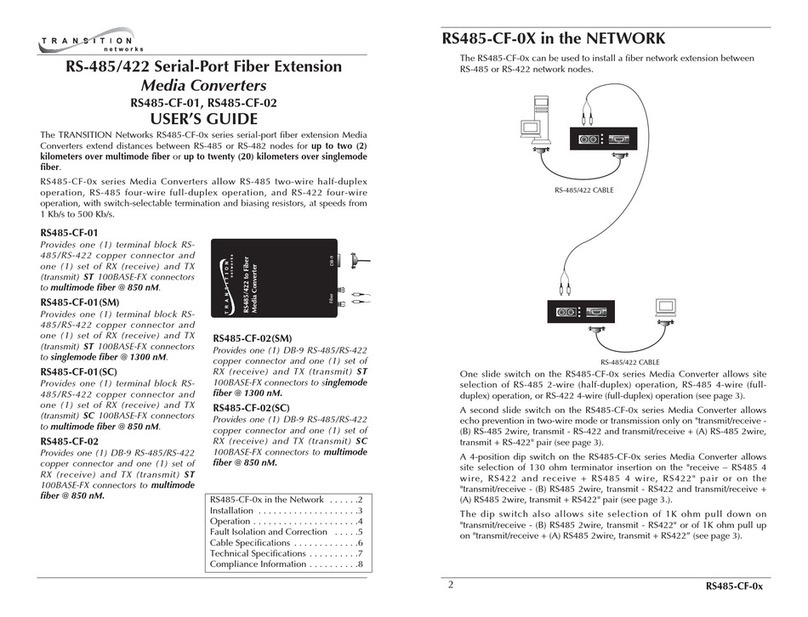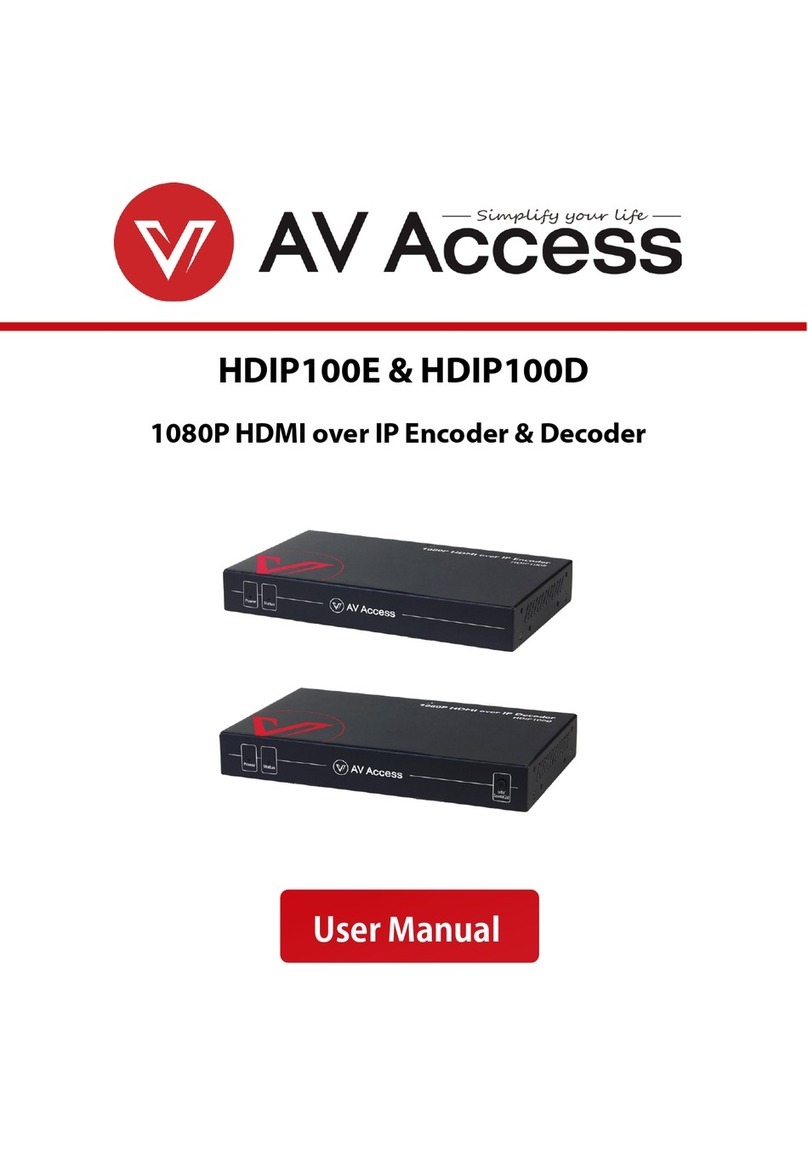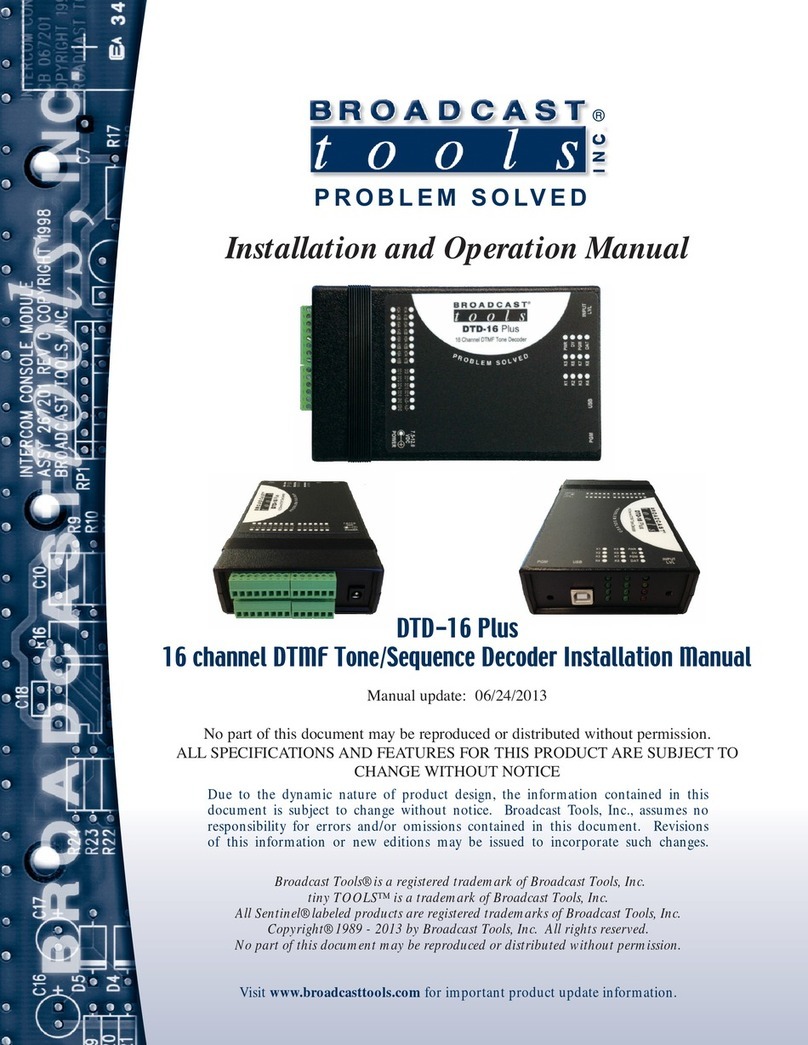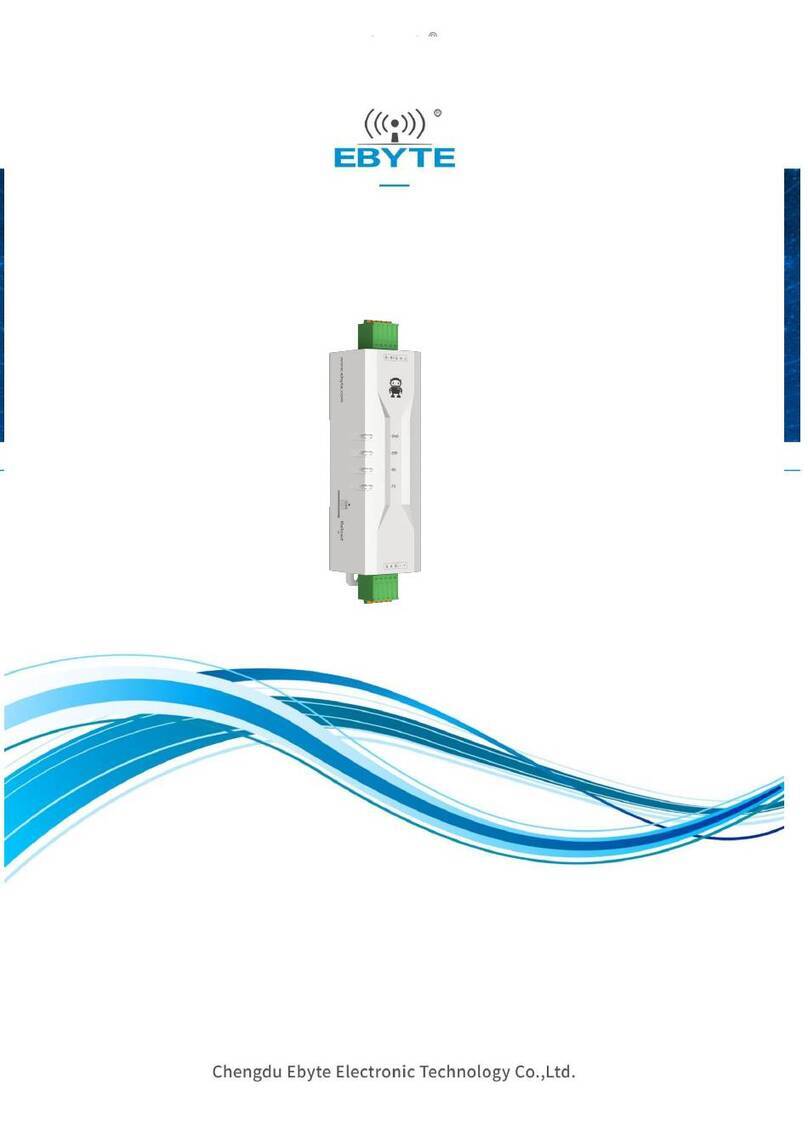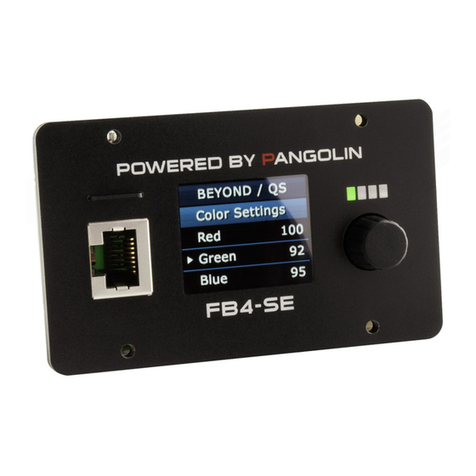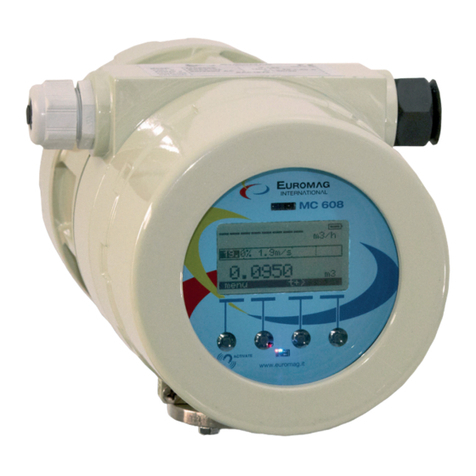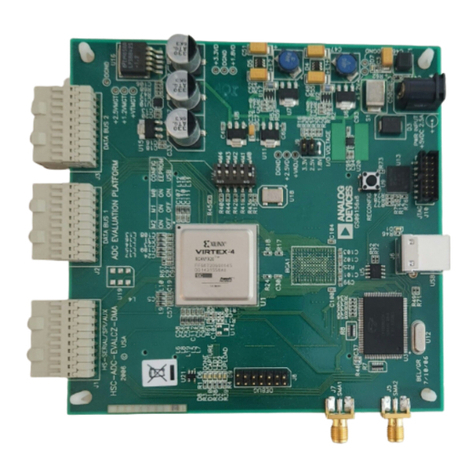Charvel GTM6 User manual

GTM6
GUITAR
TO
MIDI
CONVERTER
USER'S
MANUAL
TM
6V
JACKSON
/
CHARVEL
Scan by Manual Manor
http://www.markglinsky.com/ManualManor.html

CONTENT
INSTANTSTART
1.
SENSITIVITY
ADJUSTMENT
2.
DYNAMICS
3.
SYNTHESIZER
ON-OFF
4.
TRIGGER,
QUANTIZE,
BEND
MODES
5.
CHANNEL,
TRANSPOSE,
TUNE
CHANNEL
TRANSPOSE
TUNETHEGTM6
TUNE
THE
GUITAR
6.
PROGRAM
CHANGE AND
CHAIN
PROGRAMING
7.
HOLD
8.
SEQUENCER
Page
4
Page
6
Page
6
Page
6
Page
7
Page
8
Page
8
Page
9
Page
9
Page
9
Page
10
Page
11
Page
12
Scan by Manual Manor
http://www.markglinsky.com/ManualManor.html

GUITAR
TO
MIDI
CONVERTER
GTM6
GUITAR
INPUT
INDIVIDUAL
STRING
SENSITIVITY
POWER
FOOT
PEDAL
REMOTE
CONTROL
DYNAMICS
CONTROL
CERAMIC
PICKUP
OUTPUT
MAGNETIC
PICKUP
OUTPUT
MIDI
OUTPUTS
PLAY
PROGRAM
o
TRIGGER
0
quantize!
I
o
88
RECORD
ON
PLAY
o
o
RAT
OFf
SHARP
DETACHABLE
REMOTE
CONTROL
Scan by Manual Manor
http://www.markglinsky.com/ManualManor.html

INSTANT
START
Now
that
you
are
the
happy owner
of
the
CHARVEL
GTM
6
we
understand
that
you
do
not
want
to
spend
your
time
reading
boring
manuals,
you
would
rather
play
the
guitar
synthesizer
as
soon
as
possible.
Here
we
provide
you
with
a
short
guide
of
how
to
do
this,
but
after
you
have
had
some
fun
please
return
to
this
manual
in
or
der
to
make
full
use
of
the
extraordinary
capabilities
this unit
offers.
Later
on
you
will
find
the
programing
card
very
useful.
This
reminds
you
of
all
program
possibi
lities
with
a
short
example.
To
use
the
GTM
6
you
need
a
guitar
equipped
with
a
special
pickup
and
also
a
spe
cial
stereo
cable
to
connect
it
to
the
main
unit.
You
must
also
have a
synthesizer
or
an
expander
with
a
MIDI
IN
socket
on
it
and
a
standard
MIDI
cable
Connect
all
JSfn
u9fher
aS
Seen
°n
Fig-1
Tune
both
the
9uitar
and
the
synthesizer
to
normal
Set
your MIDI
synthesizer
to recieve
channel
number
1.
If
you
do
not
know
how
to
do
this
check
your
synthesizer's
manual,
all
MIDI
synthesizers
must
have
a
way
to
When
you
turn
the
GTM
6
on
for
the
first
time,
make
a
so
called
"cold
start".
This
means
that
any
previous
adjustments
made
on
the
unit
will
be
erased
from
the
me
mory
and
everything
will
be
initialized
in
the
simplest
straightforward
way.
It
can
be
achieved
by
holding
down
both
the
TRIGGER
and
SEQUENCER
knobs
while
you
turn
the
main
power
switch
on.
When
you
do
this,
PLAY
lights
up
in
the
upper
left
comer,
two
horizontal
lines
ap-
S^Thl
?PoiSAno
k°?
LEPS
bel0W
the
display
start
t0
flash-lf
vou
naif
press
the
SEQUENCER
button
REC
turns
off
and
PLAY
remains
on,
and
you
SJ°UL
i!!.ar
the
"Dwarfs
Dance" mel°dy
of Grieg.
If
this
does
not
happen
then
fS?
.
ume
is
turned
up
both
on
the
amPl'fier
and
the
synthesizer
if
the
MIDI
cable
is
good;
and
also
if
the
recieving
channel
adjustment
is
good.
Press
SEQUENCER
again,
then
the
melody
stops,
and
both
REC
and
PLAY
will
Xe£3^
Scan by Manual Manor
http://www.markglinsky.com/ManualManor.html

System
1
-
Using
one
guitar
amp
+1
synthesizer
System
2
-
Using
two
amps
and
one
synthesizer
SYSTEM
I
—
USING
ONE
GUITAR
AMP
♦
1
SYNTHESIZER
o
o
mmiiiiiiimi
TO
PA
MIXER
System
3
-
Controlling
separate
synthesizer
with
each
string
V
GTM4
(N
MICH
TK»U
LINE
OUT
Ol
i.
...
I
...
li.l
IMIMIIMMM
ASSIGN
TO
MIDI
CHANNEL
\
t
IN
MIDI
—THRU
UNI
OUT
LJ.i
..
luJ
tlUIIUIlllllIl
ASSIGN
TO
MOM
CHANNEL
2
^-4
SYSTEM
4
-
CONTROLLING
SEPARATE
SYNTHESIZER
WITH
EACH
STRING
ASSIGN
TO
MIDI
CHANNH
3
[N
THRU
UNE
OUT
IN
THRU
LINE
feJ
ASSIGN
TO
MUM
CHANNEL
5
i
JI
_(N
tKRU
LINE
OUT
Oil
I.,
I ■ .
.
ll.l
innunuur
ASSIGN
TO
Mtt>
CHANNU
6
Scan by Manual Manor
http://www.markglinsky.com/ManualManor.html

DETAILED
DESCRIPTION
1.
SENSITIVITY
ADJUSTMENT
Optimal
results
of
tracking
speed
and
reliability
can
be
obtained
only
if
the
indivi
dual
sting
sensitivities
are
adjusted
properly.
The
sensitivity
of
each
string
can
be
adjusted
separately
according
to
the
type
of
strings
used
and
the
usual
strength
of
your
plucking,
whether
you
play
heavy
me
tal
or
soft
jazz
etc.
Press
PLAY/PROGRAM
and
turn
the
DYNAMICS
potentiometer
slightly
in
any
di
rection.
The
display
disappears
completely
and
the
REC
and
PLAY
LEDs
start
to
flash.
Now
the
display
acts
like
a
level
indicator
of
a
tape
recorder.
When
you
pluck
a
string
two
horizontal
lines
will
appear
in
the
lower,
middle
or
upper
part of
the
dis
play.
Pluck
one
string
continously
with
average
plucking
strength
and
adjust
the
corresponding
trimmer
until
the
light
settles
in
the
middle
of
the
display.
Repeat
this
for
all
strings,
then
press
PLAY/PROGRAM
again
to
return
to
PLAY.
If
your
synthesizer
accepts
key
velocity
information
then
there
is
another
possibi
lity
too:
Pluck
one
string
continously
with
average
plucking
strength
while
the
DYNAMICS
is
turned
down
to
zero,
then
turn
it
on
to
maximum.
If
the
sound
gets
louder,
turn
the
trimmer
corresponding
to
the
plucked
string
back,
if
it
becomes
softer,
then
turn
it
up
slightly.
Do
this
until
the
sound
is
about
the
same
in
both
positions
of
the
DYNAMICS.
Do
this
for
all
of
the
strings.
Certain
errors
will
be
indicated
when
the
sensitivity
is
not
adjusted
properly:
Sensitivity
too
low:
a./
At
very
soft
plucking
no
sound
starts
at
all.
b./
At
soft
and
high
sounds
bending
is
not
followed
properly.
Sensitivity
too
high:
a./
When
chopped
chords
are
played
strange
sounds
appear
when
the
strings
are
damped.
b./
When
you
are
bending
a
string
the
neighbouring
string
starts
too
when
you
hit
it
whith
your
left
hend.
2.
DYNAMICS
If
your
synthesizer
accepts
key
velocity
information
then
you
can
use
the
DYNA
MICS
potentiometer
on
the
front
plate.
If
you
turn
it
up,
the
sounds
will
be
very
sensitive
to
the
strength
of
your
plucking.
If
you
turn
it
down
the
sounds
will
settle
down
more
and
more
to
an
average
level.
3.
SYNTHESIZER
ON'OFF
The
leftmost
pedal
is
the
ON-OFF/REC-PLAY
pedal,
which
turns
the
synthesizer
sound
on
and
off.
You
can
see
this
as
the
REC
and
PLAY
LEDs
both
turn
on and
off
at
the
same
time.
This
pedal
has
a
second
function
too,
but
more
about
this
la
ter.
6
Scan by Manual Manor
http://www.markglinsky.com/ManualManor.html

4.
TRIGGER,
QUANTIZE,
BEND
modes
The
GTM
6
can
respond
to
the
bending
of
a
string
in
three
different
ways.
None
of
these
are
better
then
the
other,
each
of
these
is
very
useful
in
the
correct
musical
application.
In
TRIGGER
mode
pitch
bending
does
not
follow
smoothly,
instead
a
new
note
is
started
as
you
reach
the
pitch
of
the
neighbouring
semitone.
The
result
is
as
if
a
piano
player
was
trying
to
imitate
a
guitarist.
QUANTIZE
mode
is
similar
to
this,
only
the
exact
pitches
of
a
semitone
scale
are
allowed,
but
the
sound
changes
from
one
semitone
to
the
other
without
starting
the
attack
period
again.
BEND
mode
follows
even
the
slightest
bending
of
your
left
hand
accurately.
The
decimal
points
on
the
display
will
help
you
to
remember
which
of
the
three
bend
modes
is
functioning;
no
points
means
that
the
TRIGGER
mode
is
selected,
the
left
point
alone
means
QUANTIZE
mode,
both
points
mean
BEND
mode.
If
you
use
TRIGGER
mode,
any
MIDI
synthesizer
can
be
used
without
further
ad
justments.
In
the
other
two
modes
the
GTM
6
sends
out
pitch
bend
information,
so
the
pitch
bend
range
of
the
recieving
synthesizer
has
to
be
set
accordingly
to
this
to
8
semitones.
For
example
DX
7
owners
should
set
their
PITCH
RANGE
pa
rameter
to
8,
POLY
800
owners
do
not
have
to
do
anything
since
their
instrument
is
fixed
at
this
value.
Some
synthesizers
from
ROLAND
have a
maximum
pitch
bend
range
of
7
semito
nes,
some
others
from
SEQUENTIAL
have
it
fixed
at
4.
In
order
to
use
one
of
these
you
must
switch
the
GTM
6
to
4
semitone
range.
Press
the
BEND
button
and
keep
it
down
while
you
change
from
PLAY
mode
to
PROGRAM
mode.
On
the
display
the
number
4
appears
denoting
the
new
pitch
bend
range.
If
you
repeat
this
proce
dure,
it
flips
back
to
8.
Remember,
since
the
pitch
bend
wheel
of
a
synthesizer
bends
all
notes
together,
there
is
a
disagreement
between
the
possibilities
of
MIDI
and
the
guitar
player
when
you
pluck
two
or
more
strings
in
BEND
mode
and
try
to
bend
one
of
them.
In
this
case
the
GTM
6
uses
it's
TRIGGER
mode
provisionally
until
you
play
mono-
phonically
again.
If
you
can
afford
six
synthesizers,
(one
for
each
string)
then
this
limitation
does
not
stand
as
you
will
see
in
the
next
chapters.
Scan by Manual Manor
http://www.markglinsky.com/ManualManor.html

5.
CHANNEL,
TRANSPOSE,
TUNE
When
you
press
the
PLAY/PROGRAM
switch,
PLAY
turns
off
and
PROGRAM
turns
on.
The
previous
three
switches
will
work
now
as
CHANNEL,
TRANSPOSE
and
TUNE.
Any
sounds
coming
from
the
synthesizer
will
be
halted
while
you
are
in
PROGRAM.
In
PROGRAM
you
can
program
the
important
parameters
of
the
GtM
6.
These
parameters
will
remain
intact
even
if
you
turn
the
unit
off
and
they
can
only
be
erased
by
a
cold
start.
CHANNEL
The
GTM
6
can
be
used
with
1
to
6
synthesizers
(or
a
synthesizer
with
MONO
mode)
for
the
6
strings,
an
other
for
the
sequencer
and
one
more
for
the
HOLD.
If
you
want
to
use
all
these
possibilities,
you
should
connect
all
synthesizers
to
the
MIDI
OUT
sockets
of
the
GTM
6.
The
MIDI
THROUGH
outputs
on
the
synthesizers
can
be
used
as
well.
First
assign
a
channel
number
between
1
and
8
to
each
as
it
is
given
in
their
manual
and
turn
OMNI
mode
off
on
all
synthesizers.
The
REC
and
PLAY
leds
flash
until
you
define
the
source
you
want
to
assign
to
a
MIDI
channel.
You
can
define
a
string
by
plucking
it,
or
entering
the
number
of
the
string
on
the
keypad.
The
number
of
the
string
appears
on
the
display,
and
you
should
enter
the
required
MIDI
channel
number.
If
you
do
not
want
to
do
anything
more,
then
press
PLAY/PROGRAM
again
and
you
can
play.
Besides
the
strings
you
can
also
name
the
sequencer
as
a
source
if
you
press
the
SEQUENCER
button
(then
SE
appears
on
the
display)
or
you
can
press
the
HOLD
pedal
(hd
appears
on
the
display).
There
is
one
more
source
you
can
assign
a
MIDI
channel
to:
the
program
change.
To
achieve
this
press
the
CHAIN
button
(ch
ap
pears
on
the
display).
With
this
you
can
determine
which
of
the
synthesizers
will
be
affected
by
remote
program
change.
If
you
want
to
assign
all
the
6
strings
to
the
same
channel
there
is
a
possibility
to
do
it
more
conveniantly.
Instead
of
pressing
the
keys
1
-6
for
choosing
one
of
the
strings,
press
7
or
8
and
AL
appears
on
the
display.
All
strings
will
be
assigned
to
the
MIDI
channel
now
entered.
A
cold
start
assigns
every
MIDI
channel
parameter
to
channel
1.
Excercise
A.
The
aim
is
to
assign
the
D
string
B.
The
aim
is
to
assign
the
A
string
to
channel
7:
to
3
and
the
SEQUENCER
to
8:
1./
Press
PLAY/PROGRAM
1./
Press
PLAY/PROGRAM
2.1
Press
CHANNEL
2./
Press
CHANNEL
3./
Pluck
the
D
string
3./
Press
5
(for
A
string)
or
press
a
on
the
kaypad
4./
Press
3
4./
Press
7
on
the
keypad
5./
Press
CHANNEL
5./
Press
PLAY/PROGRAM
6./
Press
SEQUENCER
7./
Press
8
8./
Press
PLAY
PROGRAM
Scan by Manual Manor
http://www.markglinsky.com/ManualManor.html

TRANSPOSE
Any
of
the
strings
can
be
transposed
any
number
of
semitones
within
the
limits
of
3
octaves
down
and
up.
Press
TRANSPOSE
then
define
a
string
either
by
plucking
it
or
pressing
the
number
of
the
string.
If
you
press
7
or
8
just
very
quickly
the
string
number
disappears
and
the
presently
stored
transposition
value
of
that
string
will
be
written
on
the
display.
Transposition
value
means
the
number
of
semitones,
so
one
octave
up
is
12,
and
36
is
the
maximum.
Transposition
down
is
noted
by a
de
cimal
point.
As
you
can
see
two
arrows
can
be
found
beside
the
keys 7
and
8,
one
up
and
one
down.
These
can
be
used
to
edit
the
transposition
values
either
stepping
one
by
one
or
running
fast
on
the
scale
if
held
down.
If
you
have
reached
the
required
va
lue
then
press
TRANSPOSE
again
to
go
to
an
other
string
or
PLAY/PROGRAM
to
return
to
play.
Although
you
can
reach
any
pitch
by
the
way
described
above,
there
are
two
addi
tional
transposition
possibilities
to
make
life
easier.
When
you
press
TRANS
POSE,
instead
of
defining
one
of
the
strings
with
the
keys
1
-6
you
can
press
7
for
SEMITONE
(SI
appears)
or
8
for
OCTAVE
(OC
appears).
In
these
cases
you
trans
pose
all
the
6
strings
together
either
in
semitone
steps
or
octave
steps.
By
cold
start
each
string
starts at
0
transposition.
TUNEtheGTM6
In
order
to
run
perfectly
the
GTM
6
and
the
guitar
should
be
tuned
together
ex
actly.
You
are
not
restricted
to
normal
tuning,
you
can
tune your
guitar
anywhere
within
one
semitone
up
or
down
from
440
Hz.
Anyway,
the
GTM
6 has
to
"learn"
your
tuning.
When
you
have
tuned
your
guitar
exactly
as
you
wish,
press
TUNE
and
then
pluck
the
A
string
softly
and
let
it
decay.
Flashing
will
stop
soon
and on
the
display
you
will
see
your
tuning
in
cents.
From
this
point
on
this
will
be
the
tu
ning
the
GTM
6
accomodates
to.
PLAY/PROGRAM
will
take
you
back
to
the
PLAY
mode.
The
initial
value
by
cold
start
is
the
exact
440
Hz.
TUNE
the
guitar
The
GTM
6
can
also
be
used
as
an
extrordinary
tuning
aid.
In
the
PROGRAM
mode
press
the
TUNE
key
twice
successively.
Then
pluck
any
of
the
strings
and
the
dis
play
will
show
the
pitch
deviation
of
that
string
in
cents
compared
to
the
440
Hz
tuning.
If
the
string
is
out
of
the
one
semitone
border
limits
a
horizontal
line
appe
ars
at
the
top
or
the
bottom
of
the
display,
showing
that
the
pitch
is
above
or
below
the
proper
range.
Scan by Manual Manor
http://www.markglinsky.com/ManualManor.html

6.
Program
change
and
CHAIN
programing
The
presents
of
the
synthesizer
can
be
changed
from
the
numeric
keypad
of
the
GTM
6.
To
achieve
this
you
have
to
take
care
for
the
following
things:
a./
The
program
change
MIDI
channel
described
above
is
the
same
as
on
the
synthesizer.
b./
Program
change
is
engaged
on
the
synthesizer.
Check
the
manual
how
to
do
this:
In
order
to
get
a
program
change
you
have
to
type
two
numbers
successively,
just
like
on
KORG
synthesizers.
The
numbers
appearing
on
the
GTM
6
display
and
a
KORG
display
will
be
the
same.
Some
other
manufacturers,
YAMAHA
for
example
use
different
system.
Programs
will
be
changed
on
these
as
well,
only
the
num
bers
appearing
will
be
different.
Here
is
a
list
of
the
display
numbers
belonging
to
the
same
program
preset:
With
the
CHAIN
pedal
a
preprogrammed
chain
of
presets
can
be
recalled.
If
you
decide
the order
of
presets
for
a
particular
performance
then
you can
program
them
into
the
GTM
6
and
later
on
they
can
be
recalled
one
by
one.
Take
care
because
whenever
you
program
a
new
CHAIN,
the
contents
of
the
se
quencer
will
be
lost.
££!&£???!the
re<*uired
chain
of
Presets
on
a
sheet
of
paper
and
press
the
PLAY/
PROGRAM,
so
that
it
is
in
PROGRAM
mode.
Press
the
CHAIN
button
Type
in
the
SJS^iJf8
°neby
°ne
(0f
COurse
by
the
K0RG
tti)
Aft
SJS^iSf8
°ne*by
°ne
(0f
COurse
by
the
K0RG
notati°n)-
After
typing
in
the
two
digits
of
a
preset
you can
see on
the
display
the
serial
number
of
the next
pre-
GWtoZmVoKJR"
"
^
^
°HA'N
aflain'the"
pr6SS
PLAY/P"°-
If^h^f
h!V«the
Possibilityt0
memorize
one
of
the
bend
modes
together
with
each
preset.
If
you
press
one
of
the
TRIGGER,
QUANTIZE,
or
BEND
buttons
im
mediately
before
entering
the
next
preset
number
whilst
programming,
the
correct
bend
mode
will
be
recalled
together
with
this
preset.
Otherwise
bend
mode
will
not
be
affected
by
the
preset
chain.
10
Scan by Manual Manor
http://www.markglinsky.com/ManualManor.html

CHAIN
goes
around,
so
from
the
last
preset
it
jumps
back
to
the
first
one.
When
you
turn
the
GTM
6
on,
CHAIN
will
start
always from
the
first
preprogrammed
preset.
The
result
of
a
cold
start
is
that
CHAIN
will
go
through
the
presets
from
11
to
48.
There
is
a
more
advanced
way
to
use
the
CHAIN
pedal.
If
you
have
three
synthesi
zers
assigned
to
different
MIDI
channels,
one
for
playing
the
guitar,
one
for
the
SE
QUENCER,
and
one
for
the
HOLD,
you
can
also
assign
up
to
three
preset
chains
to
them.
To
achieve
this
first
you
have
to
assign
a
MIDI
channel
to
each.
In
the
PROGRAM
mode,
press
CHANNEL,
then
press
the
CHAIN
pedal.
Now
press
three
numbers
successively
(instead of
only
one
as
it
was
described
earlier).
This
way
you
assi
gned
a
MIDI
channel
to
each
of
chains
1,2,
and
3.
The
MIDI
channel
of
the
first
chain
will
also
be
the
channel
for
the
direct
preset
change
from
the
numeric
keypad.
After
setting
the
MIDI
channels
as
described
above,
you can
program
the
chains
themselves.
In
the
PROGRAM
mode,
press
the
CHAIN
pedal
and
type
in
the
first
three
preset
numbers
for
the
chains
1,2,
and
3.
The
preset
serial
number
will
ad
vance
only
after
all
the
three
presets
have
been
typed,
and
you
can
assign
the
se
cond
three.
Programming
one
of
the
three
bend
modes
should
be done
-
if
neces
sary
-
before
entering
the
next
three
numbers.
When
you
are
ready,
press
the
CHAIN
pedal,
and
then
PLAY/PROGRAM
to
return
to
PLAY
mode.
The
free
memory
space
of
the
GTM
6
is
shared
between
up
to
7500
memory
loca
tions
for
presets
and
1000
notes
for
the
SEQUENCER.
7.
HOLD
The
middle
pedal
is
the
HOLD-FUNCTION.
This
functions
in
two
different
ways
depending
on
whether
you
can
dedicate
a
separate
synthesizer
to
it
or
if
it
has
to
be
shared
with
the
guitar
itself.
This
will
be
acknowledged
by
the
fact
that
the
MIDI
channel
of
the
guitar
strings
is
the
same
as
that
of
the
HOLD.
If
you
cannot
dedicate
a
synthesizer
to
it,
then
HOLD
will
sustain
the
sound
that
on
is
the
moment
you
press
the
pedal
and
will
sustin
it
until
you
release
it
again.
Du
ring
this
you
can
play
further
using
the
natural
sound
of
the
guitar.
If
you
want
to
sustain
a
chord,
for
example,
you
have
to
play
the
chord
first
then
press
the
pedal
a
moment
later.
If
you
use
synthesizer
A
for
the
guitar
strings
and
synthesizer
B
separately
for
the
HOLD
then
whenever
you
push
the
pedal
the
sound
of
A
stops
immidiately
and
B
will
start
any
new
note.
When
the
pedal
is
released
the
last
sustained
notes
of
B
will
be
held
until
you
push
the
pedal
again.
If
you
want
to
sustain
a
chord
then
push
the
pedal
first,
hit
the
chord
and
release
the
pedal
immidiately.
The
pictures
on
the
programing
card
explain
all
these
operations.
In
the
second
mode
you
can
use
the
HOLD
pedal
to
switch
back
and
forth
between
two
synthesizers
by
keeping
the
pedal
down
for
B
and
releasing
it
for
A.
11
Scan by Manual Manor
http://www.markglinsky.com/ManualManor.html

8.
SEQUENCER
Cartainly
any
MIDI
sequencer
can
be
connected
to
the
GTM
6
just
as
if
it
were
a
MIDI
keyboard
itself.
In
spite
of
this
the
GTM
6
contains
an
internal
sequencer
which
is
rather
unusual
in
that
it
is
optimized
for
live
performance.
If
you
press
SEQUENCER
then
REC
and
PLAY
leds
will
start
flashing.
This
indica
tes
that
the
sequencer
is
waiting
for
a
start
command.
This
can
be
achieved
by
eit
her
pressing
SEQUENCER
once
again
so
that
it
starts
to
replay
the
last
contents
of
its
memory
or
pushing
the
REC-PLAY/ON-OFF
pedal
which
starts
recording
once
again.
Recording
has
to
start
in
time
with
the
music.
If
you
want
to
record
one
measure
for
an
ostinato
accompaniment
then
press
the
pedal
as
soon
as
the
first
note
is
plucked
(the
REC
light
remains
on).
Now
the
same
pedal
has
to
be
pushed
again
at
the
start
of
the
next
measure
and
at
this
point
the
REC
led
goes
off,
PLAY
led
turns
on and
the
sequencer
starts
to
replay,
so
you
will
not
notice
when
the
se
quencer
started.
See
also
the
programing
card
how
to
do
this.
The
sequencer
can
memorize
about
1000
notes
and
recording
time
is
limited
to
about
90
seconds.
Pitch
bending
is
recorded
too,
although
in
this
case
it
uses
up
some
of
the
memory.
A
melody
stored
in
the
memory
will
remain
intact
even
if
the
GTM
6
has
been
turned
off
and
on
again.
If
the
same
synthesizer
is
shared
between
playing
directly
and
the
sequencer,
the
GTM
6
jumps
automatically
to
TRIGGER
MODE.
Otherwise
pitch
bendings
would
bend
the
sequence
out
of
tune
as
well.
You
can
record
a
sequence
so,
that
you
are
listening
to
the
continous
patterns
of
a
drum
machine
while
playing.
Since
you
cannot
press
the
pedal
exactly
in
time,
the
two
machines
would
slip
out
of
timing
after
a few
loops.
To
prevent
this
con
nect
the
MIDI
OUT
of
the
GTM6
to
the
MIDI
IN
of
the
drum
machine.
The
GTM
6
sends
out
stop
and
start
signals
to bring
the
drum
machine
back
into
sync
at
the
end
of
each
loop.
WrittenbyA.A.Szalay
THE
CHARVEL
GUITAR
COMPANY
P.O.
BOX
2344
FORT
WORTH,
TX
76113
12
Scan by Manual Manor
http://www.markglinsky.com/ManualManor.html

a
CD
in
<E
cr5
niswitch
{see
Drawing).
The
socket
earth
wire
5s
soldered
to
the
pcrtenfoneter
casing.
Fit
stereo
socket
instead
of
original
socket.
When
fitting,
check
that
shielding
is
Insufated
from
pick-up
cabte
to
avoid
short-circuit
Whenalicc^orerrtshawe
cable
(mono-plug)
and
connect
it
to
the
guttar
amplifier.
guitar.
Msik
opposite
position
MO
output.
Set
guitar
to
MO
position,
connect
to
GTM
6
by
stereo
cable
supplied
with
the
GTM
8.
Connect
outputs
ai
back
of
GTM
6toam^erviaagjitarc^e/thBl'BectficH
outputmill
now
transmit
signal
Iron
electric
guitar
pick-up
and
the
"Acoustic"
output
ait
the
backof
theGTM6witiartsmttthesig^
acoustic
guitar.
Connect
MO
output
to
MO-iN
input
on
synthesizer.
Check
mat
synthesizer
fe
set
to
MIDI
receiving
channel
No.
1,
When
pteyingtlvough
GIM6
be
a^usted
with
thepolentiometer
on
the
guftar
as
usual.
The
acoustic
guitar
sound
of
your
electric
guitar
fe
adjusted
by
mea>s
of
the
poter^meter
you
hav^
fitted
{connected
tomultipfexer).
You
can
switch
synthesizer
sound
on
&off
wfri
the
on-crff
pedd.
See
theGTM
6
ffistru>
If
you
want
to
use
your
electric
guitar
as
an
ordinary
slectricgultar,
connect
it
lay
the
stanctord
guitar
cable to
tw
guitar
amplifier
and
set
mini-switch
to
normal
electric
guitar
position.
Your
guitar
must
always
be
property
tuned
to
avoid
mcorrect
signals
and
oi^-of-tune
no
tes.
Guitar
neck
must
be
straight
and
the
strings
must
bectear
of
it,
since
incorrect
ssgrafc
wfliresdt
otherwise,
Enjoy
yourself!
SHADCW-JM
BektroaJojst^GmbH&Co.
KG
Montageanleitung
furMIDI-Tonabnehmer
und
Multiplexer
in
die
Elektro-Gitarre
Instructions
for
fitting
Midi
Pick-Up
and
Multiplexer
to
Electric-Guitar
D-852OEr1angen
Scan by Manual Manor
http://www.markglinsky.com/ManualManor.html

bausattbesteMaMsMgemfenTelkm:
S
>&!MBR.
eingebaut
in
TREMOLO,
aufschraubbawnStegoderLESPAULSTEG.
oi
<er
mit
Potentiometer,
MWschaflerundStereoausgartgsbucrtse.
^
OMgen
Bautefen
in
der
GterrenscriaJturig
bekommt.
da
as
sonst
einen
Kurz-
$
lebenksnn.
en
S
iabneri)Tiorkab«JwenlenaufderMultiplexp!atfnewl»folgt*ngel8tet:
<
nit
WauerMariderung
an
der
Ldtstelle
mit
der
Bezelchnung
«««•«
(Seite
A
5).
I
mitgetoer
MarWerungander
LoteteBe
mit
derBezefchnung
-Yellow.
(Seite
D
4).
ilmitgiurerMart(ieriireanderLdtste1lornitdereez9lchnung»a-«en«(SeiteG3).
il
mit
toter
MarWBrungan
der
Lfflstelte
mit
der
Bezaichnung
•Re*
(Seite
B
2).
"
i(ohneMari<iaii^and«Lj5ts!e!temitcJ8f8aza*nung»TransparenU(SeiteE1).
llnabucrise
solabgefctat
und
der
heiBe
Draht
(Steckerspitze)
auf
dam
Minischaiter
et
wercten
(siehe
Zefcrnung).
ssedraht
der
Buchse
wind
am
Potentiometergehause
angeiotet.
xictee
anstatt
Cfiginalbuchse
montteren.
aim
Bnibau zu
beachtan,
daS
die
Abschirmung
vom
Tonabnahmerkabel
isoliert
urtt
sis
keinari
KurzsohlUB
tiden
kann.
Wenn
Sie
ale
Bauteiie
eingebaut
und
ver-
°:
haben,
verbinden
Sie
Ihre
Gltarre
mit
ehem
nonnalen
Gitanenkabel
(Monostek-
m.
1sdiUe6eoesandenOitafronverstari(aran.
3
Sie,
rsweicherSchalleretGlungvom
Minischaiter Sie
den
Klarig
der
Sektro-Gitarre
§
men.
Markieren
Sie
ciiess
SteUung
als
Elektro-Gltarre.
Die
geganubertlsgende
f-
AeltfigrnaihierenSlernttMIDI-Ausgang.
>ieliraGitarrejeWajfMO-Gt6
STEVE
TANNER
518-899-5020
=luthier
Guitar
work
done
right
Mark
hope
your
well,
it
was
a
real
struggle
disassembling
the
pickup
with
humbucker/built
in
hex/serial
interface,
they
must
have
a
jig
for
it
at
the
factory,
wow
was
it
sensitve.
anyway
thats
where
the
2d
serieal
interface
comes
from.
I
laid
out
a
physical
diagram
on
a
business
card
and
included
the
shadow
diagram,
with
both
a
competent
tech
should
be
able
to
figure
it
out.
I
labeled
the
wire
budles
that
came
out
of
the
pickup
as
1,
2,
3.
Group
3 can
pretty
much
be
ignored
as
that
controled
the
switching
capabilities
of
the
mag
pu
and
is
outside
the
interface.
I've
included
the
connections
for
the
mag
pu on
the
outside
chance
it
will
get
used
that
way,
if
you
use
it
on
the
ovation
w/o
other
pu
it
should
be
fairly
straight
forward.
I
believe
it
will
work
just
fine,
but
my
electronic
skills
are
limited,
if it
does
not
you
should
be
able
to
contact
shadow
germany,
and
either
get
another
interface
or
help
on
this
one.
The
other
serial
interface
i
left
wired
as
i
used
it.
the
shadow
diagram
shows
an
additional
switch
to turn
piezo/midi
on/off.
I
did
not
use
it
that
way.
I
found
the
switch
noisey
and
unnecessary.
You
can
on/off
the
midi
via
foot
switch(easier)
and
vol
on
piezo.
any
switch
will
work
if
you
choose
to
reaply
this.
I
would
recommend
you
use
this
one
on
your
LP
style
gtr
as
this
was how
i
used
it
and
i
know
for
sure
it
will
work
fine,
i
do
not
anticipate
your
having
trouble
with
the
other
one
but
if
you
do
call
shadow
in
germany
not
usa.
when
i
needed
assistance
before
i
found
it
useless
to
talk
to
the
american
affiliate.
I
think
they're
just
sales
goobs,
I
was
able
to
get
excellent
help
when
i
spoke
to
the
german
office.
Most
everything
is
in
good
shape
cosmetically
and
everything
functions
to
spec.
There
is
another
saddle
for
the
1550
pickup
you
should
be
able
to
get
it
set
up
ok.
Since
you
have
previous
gtr
synth
experience
i'm
sure
you
know
how
to
optimize
the
synth
for
it.
The
piezo
system
has
wider
dynamic
range
than
other
systems,
in
my
book
this
is
great
but
it
does
make
it
more
sensitiye
to
picking
transients,
you
can
turn
the
sensitivity
knobs
down
pretty
far,
still
get
good
synth
response
and
not
so
much
extraneous
stuff.
I
found
that
i
adjusted
them
frequently
for
different
playing
setups.
In
general
it
has
the
same
tracking
response
as
a
GR
system
with
more
dynamic
range
and
much
more
control
functions.
It
will
take
some
getting
used
to,
it
seems
that
guitar
synthes
are
like
new
instruments,
you
have
to
adjust
your
playing
a
little.
The
new
system
I
got
is
faster
but
still
prone
to
wierdness
when
you
get
guitaristic,
and
it's
supposed
to
be
the
best.
Best
of
luck
to ya.
Scan by Manual Manor
http://www.markglinsky.com/ManualManor.html
Table of contents

